|
39. Callophrys rubi (Schiffermüller, 1758) / Green hairstreak / Lycaenidae – Theclinae
NL: groentje / D: Brombeer Zipfelfalter, Grüner Zipfelfalter / F: argus vert, la thécla de la ronce
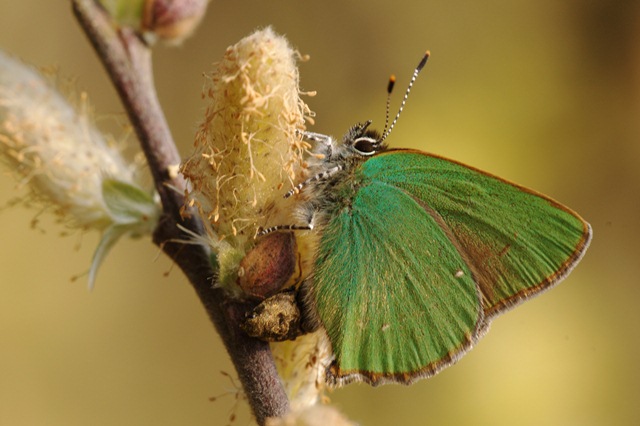 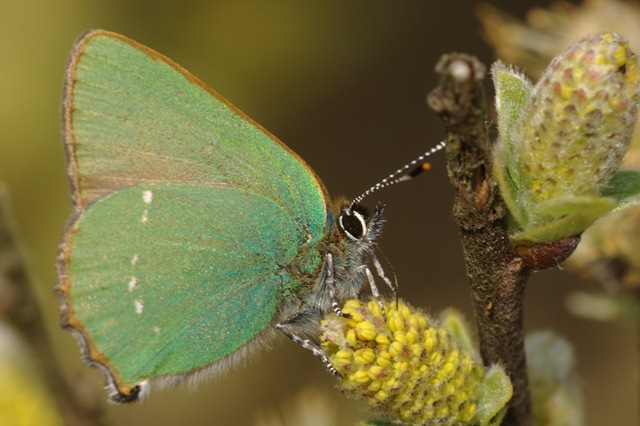 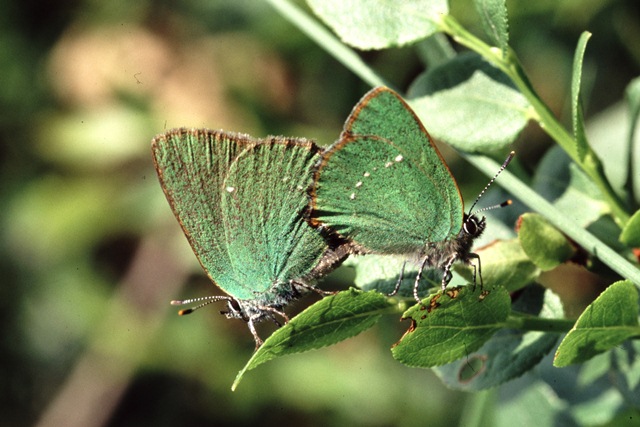
Photographs: Jeroen Voogd, Jeroen Voogd, Frits Bink ©.
Small, wing length 14 (13-15) mm. In the Benelux, widely spread but local, in heathland, raised bogs, short grassland on chalk, scrub of broom and on sunny places in coniferous woods with an open canopy.
Butterfly is on the wing from early-May until end-July and is known from maritime and severe continental climates, amplitude 4 up to 20. The required heat sum is 200°d and the maximum 2000°d, this corresponds for the amplitude 8 with the climate windows 15 and 38 weeks.
The butterfly can live as well in subarctic as in Mediterranean climates.
Its way of overwintering is unusual: the development of the adult inside the pupa stops three days before it is ready to hatch, in order that it can emerge as soon as good weather arrives in spring.
Ecological characteristics
Behaviour over time
Overwintering: pupa in the litter layer.
Reproduction: oviposition starts after 5-7 days when the body contains 61 (54-70) eggs, estimated potential production 1.7 times as much.
Larval feeding periods: 4 weeks in period between mid-May and mid-August.
Generations: always one.
Spreading of risk: extension in diapause of up to eight weeks.
Life cycle: egg 6 (5-10) days; larva 25 (22-30) days; pupa 36-46 weeks.
Life span of adult: very long, up to 5 weeks.
 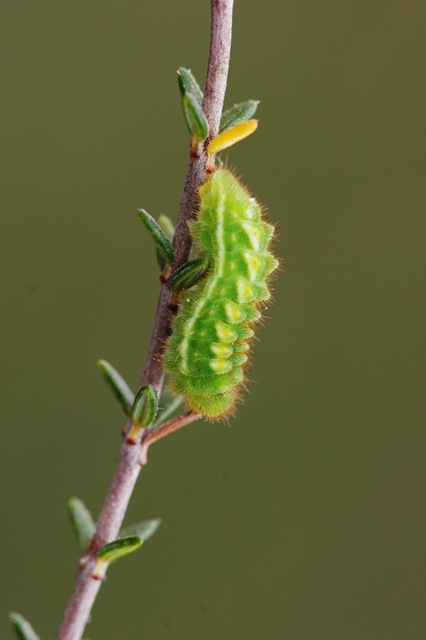 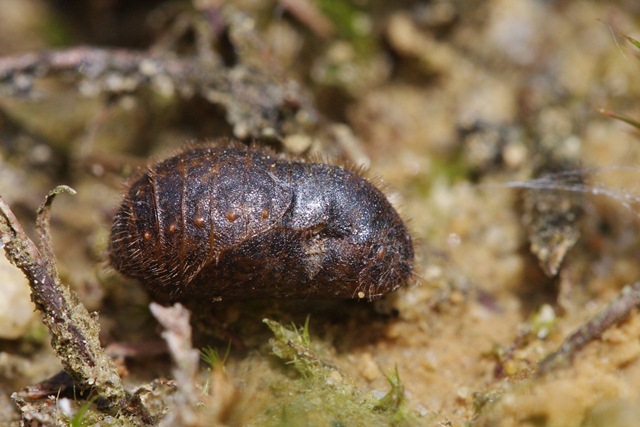
Photographs: Frits Bink, Jeroen Voogd, Jeroen Voogd ©.
Behaviour in space
From stay-at-home to migrant: stay-at-home, spatial requirement modest.
Finding a mate: male perches and behaves also territorially, but males and females may also gather on a flowering bush.
Orientation in the landscape: grades in the landscape and fine mosaic patterns in short vegetation.
Oviposition: prefers flower buds or young shoots.
Defence
Threats from other organisms: no defence but successful in avoidance of predation.
Myrmecophily: larva are not attended by ants but the pupae can stridulate loudly and are attractive to ants (Thomas & Lewington 1991: 56).
Threats from the environment: larvae and adults can endure spells of rough weather.
Feeding habits
Adult: nectar of all kinds of small flowers of herbs and trees, catkins of willow and also honeydew.
Larva: a great variety in feeding manner: boring into buds and fruits, selecting the meristem, scraping mature leaves.
Larval foodplants
Plant species: Cistaceae, Helianthemum nummularium shoot and leaf.
Ericaceae, Calluna vulgaris meristem, Erica tetralix meristem, Vaccinium uliginosum leaf, V. vitis-idea sprout and old leaf.
Fabaceae, Chamaespartium sagittale, Cytisus scoparius, Genista sp. sprout and leaf.
Rhamnaceae, Rhamnus frangula fruits and leaf. Rosaceae, Rubus sp flower buds.
Journal
Rearing experiment based on specimen from Nîsmes, Belgium:
29 May 1982: captured a female egg laying on rockrose.
1 June: eggs laid in flower buds.
9 June: eggs hatched, young larvae fed on meristem and mined into thick leaves.
15 June: larvae 9 mm in length.
27 June: larvae full grown, 15 mm in length.
30 June: half of the number of larvae pupated.
Overwintered indoors.
4 April 1983: first adults appeared, two females.
8 April: next a male and a female.
17 April: last ones appeared.
Table 39-1. Results of dissections

Table 39-2. Collection and observation localities
B, Nîsmes, Tiènne-Breumont 215 m, 50° 04’ 40”N – 4° 32’ 35”E; 28May 1982.
B, Theux 50° 33’ 20”N – 5° 49’ 50”E; 30 April 1983, 17 June 1983.
D, Blankenheim 50° 22’ 40”N – 6° 41’ 05”E; 20 June 1983.
D, Kaub 50° 05’ 36”N – 7° 45’ 43”E; 26 May 1986.
D, Lorch 300m, 50° 02’ 05”N – 7° 47’ 56”E; 26 May 1986.
F, Vosges, Bollenberg 363 m, 47° 56’ 54”N – 7° 15’ 21”E; 11 June 1984.
NL, Breeveen 52° 02’ 16”N – 5° 25’ 52”E; 12 May 1982, 21 May 1982.
NL, Hoge Veluwe 52° 05’N – 5° 51’E; 24 May 1983, 11 July 1983, 30 July 1984.
NL, Meeuwenkampje 52° 02’ 57”N – 5° 32’ 53”E; 9 June 1984.
Fig. 39-1. Callophrys rubi, phenogram adapted from Bos et al. 2006: 157.
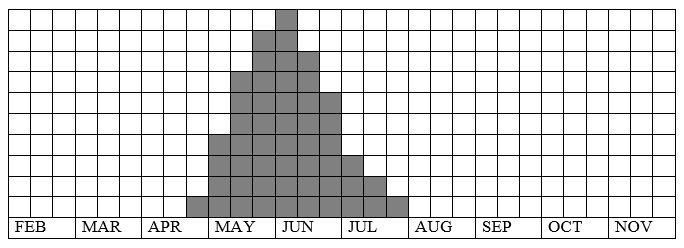
Fig. 39-2. Callophrys rubi, habitat characteristics.
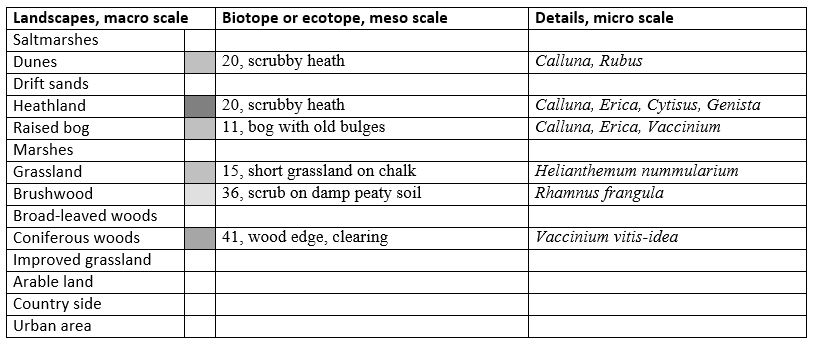
Fig. 39-3. Callophrys rubi, climate matrix, heat-sums 200 - 2000°d.
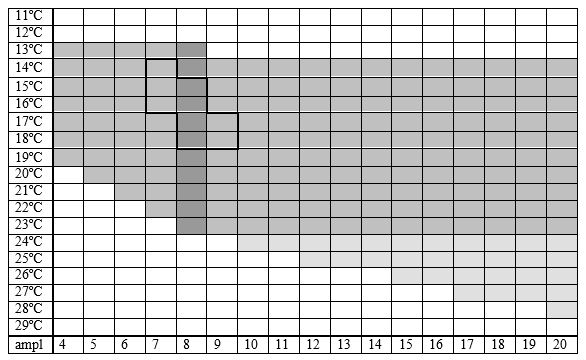
|











